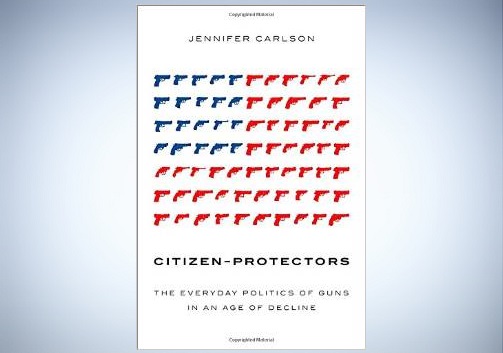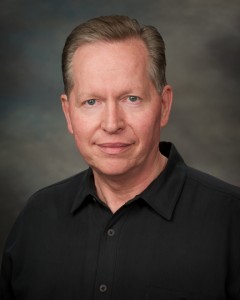
Citizen-Protectors: The Everyday Politics of Guns in an Age of Decline by Jennifer Carlson. Oxford University Press, 2015, 227 pages.
One of my favorite college professors was an anthropologist, one of the old-school types who had done field work with the Alaskan Eskimo. A concealed carry permit holder myself, I felt like a subject of this model of scholarship as I critically read University of Toronto sociology professor Jennifer Carlson’s fascinating field study of several dozen gun-carrying residents of southeast Michigan’s industrial cities—Detroit, Flint, Lansing, and their suburbs. Carlson is notable in her profession by refraining from using scholarship as a perch from which to attack gun owners under the banner of science.
All of Carlson’s subjects, mostly men, were licensed to carry concealed firearms, with some opting to carry open. All were shaped in some way by the economic decline of their cities, either through loss of employment or racial discord. The setting for her study is the “zombie-like city [Detroit], simultaneously living and dead”, where men have met the challenge of survival by righteously deciding to carry guns to defend themselves and their communities.
She further generalizes Metro Detroit’s economic and social maladies to the nation at large, pointing to the dramatic and massive shift over the last two decades in national attitudes toward acceptance of firearms for self-protection. In fact, she cites the view of “the gun as a tool of citizenship” carried by men (and some women) who have lawfully taken on themselves the role of Citizen-Protector. This author, coming from the University of California-Berkeley and from a non-gun owning family, found that obtaining her own CPL (concealed carry permit) was going to be a necessary part of her research. First, and remarkably, she “began to understand that a person’s CPL was not just a legal document indicating one’s lawful capacity to carry, but also a certificate of one’s moral character.” Second, she knew that it would establish her bona fides as a serious traveler in the community of gun carriers. In the process she also became an NRA-certified instructor.
This author’s treatment of the National Rifle Association’s role in Michigan’s concealed carry permitting process was also extraordinary. Rather than indulging in a ritual excoriation of the NRA, she devotes a whole chapter to the organization’s long history of teaching gun safety, personal security, and tactics. It is almost unimaginable that in today’s campus environment of political correctness a researcher would be allowed to write anything laudatory about the NRA.
But she goes even further by admitting her own surprise that her NRA instructor training focused heavily on shaping the moral disposition of the gun carrier, i.e., spending time discussing such weighty matters as the ethics and law of lethal force. In an entirely non-judgmental way she concludes that shall-issue laws, by usually requiring some measure of NRA-sanctioned instruction for licensees, “provide the NRA a space in which to shape a moral politics of life and death.”
Still, as the book progresses the reader gets constant reminders of the author’s bias. She throws around words like “gender” and “privilege,” and almost every reference to her interviewed subjects includes a designation of either “African American” or “white.” Some of that is doubtless necessary in a discussion of this setting and its history, much of which is connected to patterns of concealed carry there. For example, Carlson makes the unexpected observation that in Metro Detroit, lawfully carrying a firearm for self-defense is more common among African American men than among white men. Understood in the setting of post-apocalyptic Detroit, with its dangers disproportionately coming down on black residents, this makes perfect sense.
Still, Carlson overdoes the racial analysis to an uncomfortable degree, jumping easily beyond practical demographic considerations to making political points. As an example, she automatically equates terms used by her subjects—“gangbanger, drug dealer, and crackhead”—as “racial code words”, an unjustified and potentially inflammatory charge.
In several places the author’s self-avowed attempt “to do the impossible: write an illuminating but apolitical book about guns” becomes indeed impossible. In her otherwise commendable chapter on NRA training she dissects its principles as a simplistic lesson in moral turpitude, a snap moral judgment about who needs shooting and who doesn’t. She takes the NRA’s view to task for ignoring other explanations of crime such as marginalization, over-incarceration, and disenfranchisement of poor men of color.
There is no doubt some truth in all those charges. But here Carlson does allow her politics, which are likely very much those of most of her fellow sociologists, to color her NRA training. True as those injustices may be, they are irrelevant to the Citizen-Defender’s terrible task. In deciding whether to deploy lethal force, the Citizen-Defender must consider four factors. And none of them have to do with race, gender, or American history: Does her attacker have the ability to inflict deadly force on her (e.g., is he much larger, is he armed)? Does he have the opportunity (is he standing close to me)? Am I in jeopardy (is he screaming he’s going to kill me)? Preclusion (Is there anything I can do short of shooting him to keep him from killing me?).
In another passage, she describes a twenty-something African American man, who, upon seeing her open-carried handgun, jokingly put up his hands, laughing “I didn’t do it.” Carlson launches into a jargon-laden riff, pegging this seemingly innocent encounter as “call[ing] out my (racial) privilege by putting me in the role of law enforcer” and “emphasizing my demoted status as a woman.” I hope she doesn’t view her male students with such a jaundiced eye.
And I suspect it’s mandatory for an author in this academic discipline, in the early 21st century, to demonstrate the genderedness of all things that go “bang”. We get some examples of “manly posturing” and “masculinity contests”, such as men discussing who had the best gun, who knew the most about the mechanical minutiae of firearms, and who had the best shot. Or “passionately arguing online about…holsters, bulletproof vests, defensive flashlights, pepper spray, Glocks, and 1911s.”
One has to wonder how much time Dr. Carlson spends around men. To us this sounds like a bunch of guys enjoying talking about guns and nothing more.
At the risk of appearing too disapproving of a book I like, I will mention a serious flaw—the author’s validation of a pervasive and mostly unjust meme, “shooting an unarmed man.” Her first chapter opens with the nightmarish story of a cashier (white) at his family’s corner store shooting dead a 19 year old robber (African American) who was threatening him with a gun. The cashier was quickly exonerated by the investigating police officers, who didn’t even arrest him. At the end of her book, Carlson discloses that the robber’s gun had turned out to be a “fake.” Even with her NRA training, even knowing the law judges a shooting through the eyes of the shooter as death stared him in the face, she picks at the possibilities of what could have happened if the cashier could have or should have known the gun was fake.
Media reports of such shootings famously encourage the public to view them according to a well-established template, or narrative—“white man shoots unarmed black man.” And these uninformed viewers and readers take home the intended message of cruel and unjustified racially motivated killing, rather than what really happened—a legally justified self-defense homicide. These reports repeatedly and negligently omit the fact that the shooter reasonably believed his life was in danger, a fact that becomes clear in the light of testimony and evidence, but not in a 45-second TV segment.
But Carlson is not uninformed. She gives no explanation of why she nevertheless engages in such retrospective finger-pointing when it has absolutely no bearing on the case.
Carlson concludes her book by claiming to occupy a stance above the fray, choosing neither side in the contentious debate over gun control. Instead, she pleads “we should not embrace gun policies that leave untouched the deep and uneven problems of decline that aggravate fear, exacerbate inequality, and drive many Americans to guns in the first place.”
That sounds like a good-faith plea for betterment of the human condition. Who couldn’t support that? In the meantime, human nature asserts itself as it has always. History tells us that some people will choose to victimize others. Until the kingdom of heaven is realized in Detroit and elsewhere, we must see the world as it is and live accordingly.
—Timothy Wheeler, MD is director of Doctors for Responsible Gun Ownership, a project of the Second Amendment Foundation.

